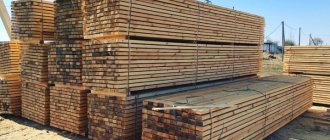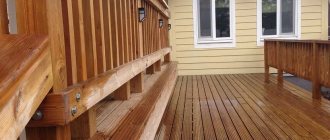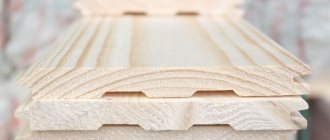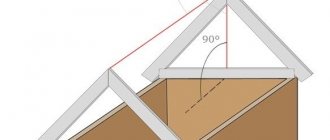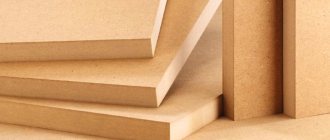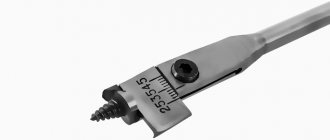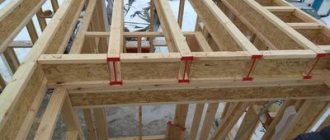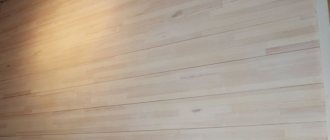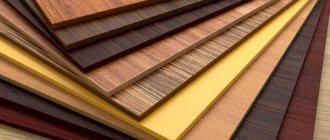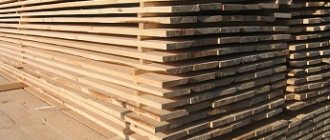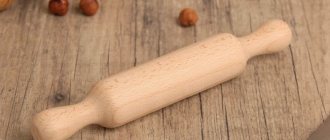Caring for the local area requires constant attention, time, and money. I often want to have a terrace, but wood outside is a real hassle. Too much time and money must be invested to maintain a normal appearance. There is an alternative - decking boards made of wood-polymer composite (WPC). Looks like board, no need to paint. By the way, it can be used in gazebos and on piers, on balconies, etc. Fences and stairs are made from the same polymer board. In general, good material.
What is a terrace board
The decking board is intended for use outdoors, in light buildings. Most often they make flooring on a covered or open terrace; they are also used as flooring around pools, in gazebos, etc. The operating conditions are difficult, so increased demands are placed on the material for its manufacture. It must withstand all weather conditions well, absorb moisture poorly, and be resistant to ultraviolet radiation and biological damage. And also strong, durable, beautiful and inexpensive. That's another set of properties. There are not many materials that correspond at least partially.
Terrace board - molding for outdoor flooring
The same type of material is called decking from the English deсking, which translates as flooring, but more often as deck flooring. Apparently this is why you can also find the name “deck board”. Actually, it differs in that longitudinal grooves are formed on the front surface for water drainage. This is very necessary on decks. The same grooves make the flooring less slippery when it rains. Often (but not always) decking boards are also made with longitudinal grooves.
What are they made from?
Initially, very dense wood species with a large amount of resins were used for decking boards. Such breeds do not grow in our latitudes, and it is too expensive to buy exotic ones outside. Of the local wood, larch feels more or less at home outdoors, but it turns gray no matter how you care for it.
At first, the decking board was made of wood
Later, heat-treated wood appeared. It is kept at a temperature of 140-160°C, as a result of which its density increases, it absorbs less water (several times less). When properly processed, it is not affected by fungi. But such a board does not cost much less than the “exotic”. Still, this is wood, so maintaining the appearance is annual.
WPC board - what it is and what it is made of: a mixture of wood flour and polymer with a small percentage of stabilizing additives
Wood-polymer composite or WPC has appeared relatively recently. It is a mixture of wood fibers and polymer, to which coloring pigments have been added. Boards are formed from the resulting mass by extrusion. The coating cannot be called natural, since polymers are used. But it meets most of the requirements. Let’s say right away that high-quality WPC decking cannot be called cheap.
Where not to use
Polymer terrace board is a material with unique characteristics, but it must be used correctly in finishing work. So, you cannot use it for installation in:
- damp and closed places where there is no access to sunlight or wind, otherwise mold will appear here. It is unacceptable for the decking board to be constantly exposed to water;
- places where the temperature often changes: in steam rooms, baths or saunas, freezers. Under the influence of temperature changes, the material will deform.
Proper installation is the key to ensuring that the surface will retain its unique performance qualities for a long time. Now let's look at the products of popular brands.
Thanks to the use of primary polymers and high-quality additives, the material is characterized by high density and wear resistance. The level of moisture absorption is kept to a minimum, so the board can be used on piers and moorings.
A wide range of models allows you to choose a deck for any task. The lightweight Smart Light profile has a low price and is suitable for private houses and unloaded terraces.
The Smart Classic or Smart Duo profile can withstand up to 650 kg/m2 and can be used for both private housing construction and commercial buildings.
The Smart Premium and Smart Exclusive series are suitable for the most demanding customers; they combine maximum material strength and a highly aesthetic original appearance.
In addition to decking boards, you can match the color of WPC fencing, fences and facades.
Polymer board for terraces: pros and cons
Wood is, of course, beautiful. But outdoors it requires regular care. Even with the condition of using modern chemistry. The same wood oil looks great throughout the year. But after a year the coating must be renewed. Considering that the cost of good oil for difficult operating conditions is quite considerable, this is quite a significant expense. Well, you also need to take into account the time it takes to process. Even if the oil just needs to be applied to the wood, it also takes time.
This is a photo a year after installation.
At the same time, wood swells from moisture and shrinks in the sun. And these are constant problems with the “humpiness” of the flooring. In general, those who have had the good fortune to maintain a wooden deck want to try something different. WPC decking boards are often considered as an alternative. Firstly, it does not require special measures to maintain its appearance. Just needs cleaning. Secondly, it is cut/drilled with a conventional tool. A saw can be for wood or metal, but a drill is better for metal. There are other advantages.
pros
You may like the appearance of the polymer board or not. And for the street, the coating is at least not bad and, with the right choice, looks decent even after years. Here are the advantages of WPC decking:
- Durability. The declared service life is 10-25 years. But these are only factories that provide accompanying documents and do not hide their name. Unnamed products are a risk, as they can fall apart within a year.
- Tolerates difficult operating conditions well. Operating temperature range -50°C to +50°C.
- Does not require maintenance. You just need to sweep away the dirt and wash it occasionally. The recommendations include annual intensive cleaning. There are no other wishes. But we need to take into account the color. If you choose a light decking, it is clear that marks and dirt will be visible on it. You either have to fight this or come to terms with it. Or take “non-staining” colors.
The joints will be visible and you will have to come to terms with it... Or somehow play with it by making a drawing - Doesn't change appearance. It just fades a little. The intensity of fading depends on the amount of wood in the composition. It can be from 50% to 80%. The more wood fibers, the more natural the look, but it also fades more intensely.
- Almost does not absorb water and, as a result, does not swell. Absorbs about 1-2% depending on the composition.
- Doesn't change geometry.
- Does not rot, is not affected by fungi.
- Some types allow you to restore the appearance (corduroy). The polymer board with “stripes” is processed at the exit either with a metal brush or emery. And the appearance is also restored - with a brush or sandpaper.
In general, the list of advantages is quite decent. A WPC terrace looks good, even after several years of use. There are different textures and surfaces, different colors.
Minuses
There are no construction and finishing materials without shortcomings. The first disadvantage of WPC decking is the high temperature expansion. And this entails difficulties with installation. There are types of WPC, when using which you can ignore the increase and decrease in size. But not with everyone. Usually, special fastening is required - on mounting plates-clamps or on special fasteners.
The second disadvantage is that wood-polymer concentrate does not like to be in water. You can get it wet, but you shouldn’t keep it in a puddle. Therefore, you need to make sure that the water rolls off as quickly as possible. In the case of a non-continuous flooring (with a gap between the boards), the water drains away quickly in any case. But when laying continuously, it is better to choose the direction of the “grooves” so that the water drains as quickly as possible. You can arrange a slight slope towards the edge of the site.
As you can see, there is a difference in colors. Some manufacturers do not consider this a defect
What else is worth remembering. WPC consists of 50-70% wood. The resulting strength is not as high as tile or stone. You should not hit it with a hammer or drop large and heavy objects. It will either crack or dent, or the top wall of hollow boards may break. So this also needs to be kept in mind.
Of the operational problems, perhaps, that's it. There are still problems of choice. The fact is that we do not have a standard for WPC and they make it from whatever they have. But there are certain signs by which you can cut off obviously low-quality products. However, there is such a problem.
One of the unpleasant aspects of installation is that when cutting, the teeth of the saw quickly wear out, so you need more than one blade and, preferably, of good quality.
Types of wood-polymer composite material
The decking available on the market can be divided into three groups. It looks like this:
- Solid wood . Resinous trees with a dense structure are used as raw materials. This material is environmentally friendly and is in consistently high demand among buyers.
- Thermowood . Solid wood is also used here, which is additionally subjected to heat treatment. Temperatures of +125/+190 degrees give the material increased strength and reduce moisture absorption. As a result, such decking does not suffer from the problem of uneven shrinkage of the floor.
- Composite . In essence, this material is a successful combination of wood, polymers and cellulose fibers. The products do not require special care, are resistant to dynamic loads and mechanical damage, and are not susceptible to negative environmental influences.
Thanks to this diversity, the consumer can choose the optimal finishing option depending on individual requirements, scope of application and financial capabilities.
WPC composite board: which polymer is better
As already mentioned, polymer decking is a mixture of split wood and polymer. But polymers are a whole class of materials. WPC is made with PVC (polyvinyl chloride), polyethylene (PE) and propylene (PP). The ratio of polymer and wood is different. There are species that are 80% wood, and others that are 50/50. The appearance depends on the amount of wood in the composite. The more it is, the more “wooden” the WPC looks. But such a polymer board fades more, and it is softer and wears out faster.
WPC properties depend on the polymer
The type of polymer also affects the appearance. WPC based on propylene has the most “natural” look, while PVC has the most “plastic” look. But each type of composite has its own nuances, and we’ll talk about them below.
Another thing is oil tolerance. For propylene and polyethylene, oil is a solvent. If oil is spilled on a coating based on these materials, it must be cleaned up as soon as possible. For this you can use water with a special detergent for polymer decking or dish soap. Then the surface must be thoroughly cleaned by rinsing several times with clean water. Oils are not dangerous for PVC. This is the advantage of this type of WPC boards.
Flammability
All wood-polymer composite boards are combustible materials, but have varying degrees of flammability. A composite with polyethylene and propylene burns no worse than wood; it should not be used in fire hazardous areas. PVC burns worse, but releases chlorine in the process.
Choose the material consciously: properties of WPC based on different polymers
There are also concerns that polymer-wood boards have an unpleasant odor. In general, at normal temperatures it smells like wood. Only if the PVC-based composite is heated to +50°C does a characteristic odor appear. Therefore, this material is recommended for installation under a canopy, and not in the open sun.
Thermal expansion and ways to combat it
Any WPC decking board has a large thermal expansion - 3 mm per meter of surface. The figure is impressive, but this figure was measured when the temperature changed from -50°C to +50°C. Agree, in real conditions such a difference does not happen in one day.
However, thermal expansion is really high. With a board length of 6 meters, the increase in size will be about 8-10 mm, which is quite a lot. So a natural continuation of the topic is the problem of fasteners. How to attach WPC decking to avoid problems with thermal expansion? Depends on the type of polymer:
- Polymer terrace boards with polyethylene can be fastened through with nails or self-tapping screws. Polyethylene is a viscous and plastic material. It compensates for such movements due to viscosity. And there will be no destruction of either the board, joists or other support. Let us warn you right away, it is softer and washes out faster. But it wears off with intensive use. That is, in public places. There will be no such load near the house, which will significantly affect the appearance.
As one of the options for solving the problem of joints and thermal expansion - The composite with PVC and polypropylene is hard and brittle. This is good, since it wears out less, but it must be attached only and exclusively to the plates. And plastic ones won't work. They need to be made of stainless steel, and their cost is considerable. And this is an additional expense and a more complex and time-consuming installation. This type of composite decking board is good for public places. Where the most important thing is not the complexity of installation, but abrasion.
There is also a unique way to combat thermal expansion. The flooring is assembled from short lengths. There is no need to fit them closely, as they even recommend leaving gaps for efficient drainage of water. These gaps will compensate for the increase or decrease in size. It turns out to be a kind of parquet. There is even a coating with the same name - garden parquet. It is made from polymer boards. But its cost is much higher than that of a self-assembled one. Here you can play with colors and textures and get a very interesting covering for the terrace.
Types of WPC decking boards
We will not talk about materials, but about profiles and other technical issues. Let’s say right away that there are solid and hollow polymer terrace boards. Solid - a solid composite without voids. This type of flooring is good in areas with high traffic. These are public places such as summer areas of cafes, embankments, piers, etc. Hollow - suitable for private property. Terrace near a private house, decking around a swimming pool, pond.
Solid - a solid composite, cellular can have different profiles. Far right - most common
By flooring method
Next, there are two types of boards - solid flooring and with gaps. Solid flooring has tongue and groove like a tongue and groove board. Installs with virtually no gaps. The coating still allows moisture to pass through, but it leaves slowly and there may be puddles on the surface in heavy rain. The advantage of such flooring is that small objects do not fall through the cracks. The second positive point is that it is easier for ladies to walk in heels.
The edge of the plate clings to these grooves. This way the decking is attached to the joists
The polymer board of the non-continuous flooring is laid with some gap - a few millimeters. With this installation, moisture does not form puddles, but seeps under the flooring. Well, the problem with longitudinal thermal expansion is solved. True, walking in thin heels on such flooring is not very comfortable. It's good that today they - thin heels - are not in fashion.
WPC decking board: profile
A non-solid wood-polymer board is also called cellular. It can be a closed profile or an open one. Closed is when there are two horizontal surfaces with bridges between them. When choosing, you need to pay attention to the thickness of the partitions and horizontal planes.
Compare regular (right) and enhanced (left). They are given on the same scale
For increased loads on the terrace there is a reinforced type of decking. Thicker webs and horizontal surfaces increase flexural strength. This means that when laying on joists, they can be installed less frequently.
WPC decking board with open W-shaped profile
An open or W-shaped profile of a composite board for terraces is when there is only one horizontal surface - on top, and below only the ends of the ribs. This type, of course, is cheaper and has a smaller height, but it is better to use it in places where the load is very light. Although, there are types with thick bridges as in the photo on the right. Quite a worthy option for laying not on logs, but on a flat concrete platform. But don’t think that it will cost much less. The difference in price is small - about 10-15%, since the consumption of the composite is increased due to the thickness of the partitions.
By type of surface
Polymer decking can have different surfaces. In general, there are two types of surface:
- With grooves. This type is called "corduroy". There are larger and smaller sizes. The width of the strips is from 2-3 mm to 5-7 mm. Accordingly, they call it microcorduroy or simply corduroy, there is also a large one... This board does not slip and wears off slightly. The downside is that it’s not very convenient for cleaning; you have to sweep debris out of the grooves. The best cleaning agent is Karcher.
A composite decking board with a corduroy surface (with grooves) is better in operation. - Wood imitation. No matter how beautiful it looks, no matter what protective layers it is covered with, it is more slippery and wears off faster. And it also costs more. But cleaning is easier. An ordinary broom is quite enough. In general, this is an excellent option for flooring where people walk barefoot or wear slippers. For example, a porch in the backyard. It is better not to use such flooring for covering in front of the main entrance - it will quickly wear off.
The same “grooves” can be polished or brushed. Sanded is smoother; brushed with a metal brush has a certain degree of roughness. Both types of surface can be restored. The first type is with sandpaper, the second is with a metal brush. The color difference will not be noticeable, since the material is dyed in bulk. Wood imitation boards cannot be restored. The relief in especially loaded places will be erased and nothing can be done about it.
If there is no processing and the surface is “cast”, this is not a very good sign. Good manufacturers carry out pre-sale preparation, giving the product a “marketable” appearance. So it is better not to consider the material without processing. No matter how attractive the price is.
Dimensions of WPC decking boards
Polymer decking is not standardized, so there is no need to talk about any uniform sizes.
Each manufacturer produces the products it considers necessary. We can talk about the spread of parameters and what sizes are optimal. An important parameter is the thickness of the WPC board. But not on its own, but in combination with the thickness of the partitions and the thickness of the front layer. This is what gives the product strength and is responsible for wear resistance and service life. So, here are the parameters of a hollow-core composite deck board:
- thickness from 19 mm to 32 mm;
- width from 13 cm to 26 cm.
The dimensions of WPC terrace boards are not standardized and can be any size.
See the partitions for yourself, information about them is almost not indicated anywhere. It is advisable that they are no thinner than 3-4 mm, ideally 4 mm. As for horizontal surfaces, it is better if they are 6-8 mm or more.
When choosing the dimensions of a wood-plastic decking, remember that the principle of laying it is the same as that of a regular board - on logs. These are bars of rectangular or square cross-section. The thinner the board, the more often you need to install logs. Otherwise, the coating will sag under your feet. And yes, a thicker board costs more, but requires less lag. There will definitely be a difference in cost. But it is usually not so impressive when you consider the cost of the lag too.
WPC stairs also look beautiful and are easy to use
So what size is it better to take a WPC decking board? For private use, take decking with a thickness of at least 24-26 mm. As for the width, it's a matter of taste. But the wider the board, the less fasteners you need. With the specified thickness of the boards, the installation step for the logs is 40-50 mm.
Installation methods
WPC decking boards can be laid on joists or on a concrete base. But only certain types of coating are placed on concrete and the site must be almost perfectly level. Most of the polymer deck boards are placed on the joists. Lags can be:
- Wooden antiseptic, impregnated with a composition for direct contact with the ground.
- Special ones made of the same material are logs made of WPC.
- From a profile pipe.
WPC decking board: installation system
Logs for laying decking boards can be laid on a prepared concrete platform. Concrete can be in the form of slabs or screed. Possible installation on piles with strapping or posts. If the base is uneven, the logs are leveled using spacers. It is better to use rubber ones, but you can cut glass insulation or other material into squares that has sufficient strength and waterproofing properties.
This is roughly how a composite deck board is attached. In general, the form of fasteners and the distance between the boards are different for each company.
Usually special logs made of WPC are recommended. They have a special groove for installing fasteners - metal Z-shaped plates. Such a system must be offered by the seller. It is problematic to use fasteners from other companies - size mismatch is almost guaranteed.
A frame has been assembled for laying WPC decking boards from a profile pipe
Logs made of wood or profile pipes can be fastened through, but the cap should not stick out. As an option, there is a perforated tape that is attached to the sides.
WPC terrace board: decorating the edges of the flooring
After laying and fixing the decking board, you need to close the sides of the platform where the logs are. For this, there are overlays in the form of strips of a certain width and a corner made of WPC. The composite corner cannot be thin. Its thickness is several millimeters. In places where there is active walking, it wears off quickly. Therefore, for these areas they often offer an aluminum corner painted to match the coating. This is not the only edge finishing option. There are also edge plugs from the same WPC, but they do not cover the joists. If you don't care about this, use only stubs.
If the platform or terrace is adjacent to the house, you can trim the joint with WPC plinth. But the option with a plastic baseboard is no worse. They come in a variety of shapes and colors and are much cheaper. If you need to save money, this is one of the ways.
Flaws
Unfortunately, such material cannot be cheap - even despite the use of relatively inexpensive components, the production process is quite expensive.
Composite boards, while immune to moisture and heat alone, perform poorly when the two factors combine.
If there is no ventilation, there is some risk of molding of composite boards. With strong and stable humidity, even the special additives included in its composition will not help.
How to choose quality WPC decking
If you are offered an imported WPC decking board at a price below the market average, it is better not to take it. Usually these are products made either in China, or (even worse) in a garage on old equipment from who knows what. There are very good Chinese boards made of polymer-wood composite, but there are many more low-grade products. It’s easier to buy from companies with a proven reputation.
The desire to save money is understandable, but cheap fish...
When choosing composite decking, here's what to look for:
- The structure should be uniform with inclusions of wood fibers. There should not be areas with different surfaces.
- The lintels are of the same thickness, the edges are clear and even.
- The surface is free of cavities, castings and other defects.
- Look at the sides, front and bottom edges. There should be no pronounced waviness.
- Chamfers and grooves are at the same distance, the same depth.
- There should be no delaminations, crumbs, etc. on the cut.
- If you try to break off a small piece at the cut site, the WPC material should not even bend, let alone break and crumble.
If you have the opportunity, look at all the colors offered by the manufacturer. Normal companies should have light shades. This means that the wood used is normal. If the colors are only dark, bark and other waste are used instead of normal wood. But this is not the same material at all and no one guarantees its properties.
questions
Environmental impact
The environmental impact of WPC directly depends on the ratio of renewable and non-renewable materials. Commonly used mineral-based petroleum polymers have a negative impact on the environment because they depend on non-renewable raw materials and non-renewable biodegradability of plastics.[27]
Fire Danger
The types of plastics commonly used in WPC formulations have higher fire hazard properties than wood alone, since plastic has a higher chemical heat content and can melt. The inclusion of plastic in the composite results in a higher fire hazard of WPC compared to wood. Some code officials have become increasingly concerned about the fire resistance of WPC.[28][29]
WPC decking board: manufacturers
Oddly enough, not many company names are heard. Only a few work on the company's image. And since there is no standard, it is dangerous to take an unnamed product for which there are no documents or guarantees. Who should I complain to if problems arise?
A little more horror
In general, here are the manufacturers that are constantly on everyone’s lips:
- Waldeck.
- Woodgrand (Russia).
- Werzalit is a German company, the quality is excellent, but the prices are high.
- Savewood is a Russian company, quite decent quality.
- TERRADEK (Terradek).
- Polywood.
- MasterDeck.
- Darvolex.
When choosing a manufacturer, look for those that have websites. Today, new materials are promoted more effectively through such resources. And if a company invests in this, it is interested in ensuring that its products are of decent quality. Otherwise, a hail of negativity is guaranteed.
